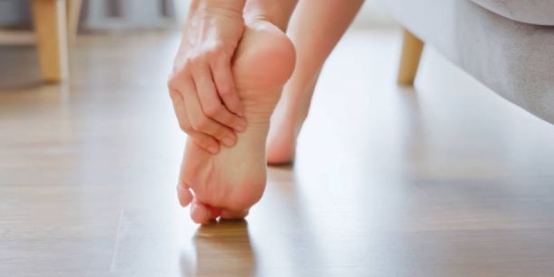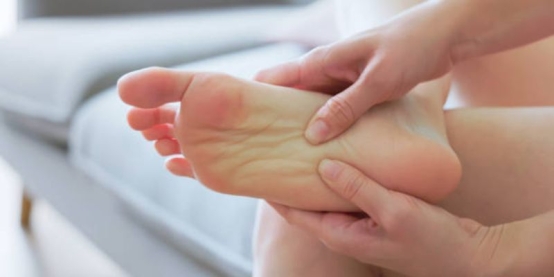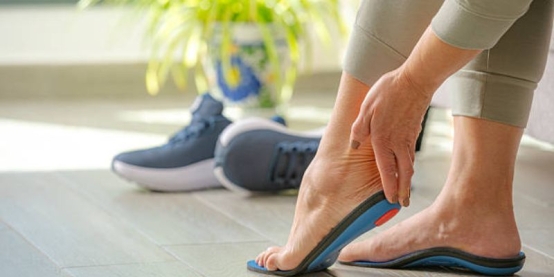How to Manage Plantar Fasciitis Pain at Home: A Practical Guide for Relief
Plantar fasciitis can feel like a sharp, stabbing pain in your heel—especially with the first few steps in the morning. It’s uncomfortable and limiting, but for most people, it can be managed effectively at home.
This guide walks through what plantar fasciitis is, how to spot it early, and a step-by-step plan (backed by evidence and expert guidance) to ease pain and encourage healing without rushing into invasive treatments.
At its core, plantar fasciitis is the irritation, micro-tearing, or degeneration of the plantar fascia—a thick, fibrous band of tissue that runs along the bottom of the foot from the heel bone (calcaneus) to the toes. When stressed beyond its limits, it becomes inflamed, painful, and stiff. Some researchers now emphasize that chronic cases reflect more degeneration than acute inflammation, but the symptoms and management overlap.
Common Triggers Of Plantar Fasciitis
Spending long hours standing or walking, especially on hard surfaces
Tight calf muscles or Achilles tendon (limited ankle dorsiflexion)
Flat feet (overpronation) or unusually high arches
Poor, unsupportive footwear (thin soles, lack of cushioning)
Sudden increases in training load (e.g. in runners)
Excess body weight placing extra strain on foot structures
These factors repeatedly strain the plantar fascia, especially near its heel attachment, leading to microtrauma.

Key symptoms
Sharp or burning pain under the heel, often worse with the first steps in the morning
Pain after prolonged sitting when first standing
Tenderness or soreness at the heel’s underside or along the arch
Pain that improves somewhat with movement, but may worsen later in the day or after aktivitas
Sometimes mild swelling or stiffness
Most mild to moderate cases respond well to conservative (home) care if attended early.
Identifying the Signs Early
Early recognition can prevent progression to a chronic—and harder to treat—condition.
How plantar fasciitis differs from other heel pain
Timing & pattern: Pain is worst with first steps or after rest (not continuous all day)
Location: Focal tenderness where the plantar fascia inserts on the medial heel
Response to movement: Initial steps painful, but mild relief after some walking
Risk factors present: Recent increase in walking, poor shoes, tight calves
Other causes of heel pain—such as Achilles tendinopathy, heel pad syndrome, stress fracture, or nerve entrapment—often have distinct signs (pain behind heel, swelling, tingling) and may require imaging or professional evaluation.
Red flags that call for attention
Intense, constant pain that doesn’t ease after a week or two of rest
Swelling, redness, or warmth indicating possible infection or other cause
Numbness or tingling (nerve involvement)
Inability to walk or bear weight
Pain worsening despite home care
Noticing symptoms early and intervening promptly increases the chances of full recovery without medical procedures.
Rest and Daily Activity Adjustments
Giving the plantar fascia a chance to heal doesn’t mean full immobilization—just smarter use.
Smart rest: what that means
Reduce or pause activities that provoke pain (running, jumping)
Avoid walking long distances on hard surfaces
Take frequent micro-breaks if your job or home routine demands standing
Safe low-impact alternatives
Swimming or pool walking: zero-impact environment
Cycling (stationary or normal): keeps cardiovascular fitness without stressing the heel
Gentle yoga or Pilates: focus on foot- and calf-friendly poses
Avoiding common triggers
Don’t walk barefoot on hard floors (tiles, concrete)
Limit heavy lifting or prolonged standing
Use a chair or stool when doing tasks that would require standing for long
Stretch or move every 30–60 minutes if seated or static
By adjusting daily routines, the strain on your plantar fascia drops significantly, and healing is allowed to begin.
Footwear Fixes: Supporting Your Foot All Day
One of the most underappreciated but crucial steps is wearing the right shoes—both indoors and outdoors.
What to look for in supportive footwear
Good arch support (to reduce flattening of the medial foot)
Thick, cushioned midsole to absorb shock
Stable heel counter (firm back of the shoe)
Slight heel lift (5–8 mm) can ease stress on the plantar fascia
Deep heel cup to cradle and reduce shear
Flexible toe box, but firm midfoot
Wear shoes indoors
Many people exacerbate pain by walking barefoot at home. Always wear supportive shoes or slippers with structure when moving around indoors.
Orthotic inserts, heel cups, and heel lifts
Over-the-counter (OTC) insoles with arch support or gel heel cups offer extra cushioning
Custom orthotics (molded inserts) may be considered for structural issues
Heel lifts (thin rubber or foam wedges) reduce tension on the fascia
Ensure inserts don’t press directly under the fascia origin (they should support, not compress)
When used properly, orthotics and heel cups are shown in clinical studies to reduce pain and strain on the plantar fascia.
Footwear types to consider
Cushioned athletic shoes (running or walking)
Supportive sandals with contoured footbed
Motion-control shoes if overpronation is a concern
Replace shoes every 300–500 miles or when midsoles feel compressed

Effective Home Remedies That Actually Work
These are actionable steps you can do with commonly available tools.
Cold therapy (ice)
Use a frozen water bottle or ice pack wrapped in a cloth
Roll the arch and heel for 5–10 minutes (do not overdo)
Do this 1–3 times per day, especially after activity
Helps reduce micro-inflammation and ease pain (ice massage is commonly recommended)
Stretching exercises
Calf stretch against the wall
Stand facing a wall, hands on wall for support
Step one foot back, keep heel down, bend front knee
Hold 30–60 seconds, repeat 2–3 times per side
Towel (or strap) stretch before standing
While sitting, wrap a towel around your forefoot
Gently pull toes toward you, stretching the arch
Hold 30 seconds, 3–5 reps
Plantar fascia stretch (windlass stretch)
Sit and cross one leg over the other
Use fingers to dorsiflex (pull up) the toes, stretching the arch
Simultaneously, press along the fascia to feel tension
Hold 20–30 seconds, repeat 3–4 times
Rolling the arch
Use a tennis ball, golf ball, or frozen bottle
Roll under your arch gently for 30–60 seconds
Do before and after activity
These stretches are consistently recommended in clinical practice guidelines.
Massage techniques
Thumb or finger pressure from the ball of foot toward heel
Use gentle pressure, not deep tissue
Combine with rolling massage using a ball
Encourages blood flow, relieves tension
Taping method
Low-Dye taping or arch taping when needed provides temporary support
Helps reduce strain while moving
Effective when used along with other home remedies (not a standalone solution)
Anti-inflammatory care (with caution)
Over-the-counter NSAIDs (ibuprofen, naproxen) may ease pain in short term
Topical anti-inflammatory gels (e.g., diclofenac) can be used
Limit use to 7–10 days unless advised by a provider
Always follow dosage instructions and consider side effects
These remedies, when done consistently and correctly, offer significant pain relief and support healing without needing medical intervention.
Strengthening and Flexibility Exercises
Stretching alone isn’t enough—strengthening the foot and calf muscles helps prevent relapse and supports long-term recovery.
Why strengthening matters
Strong intrinsic foot muscles absorb shock
Calf muscles (gastrocnemius, soleus) help control demands on your arch
Combined stretching + strengthening yields better outcomes than stretching alone
Easy at-home routines
Heel raises (single- or double-leg)
Stand on flat surface (or edge of a step for more range)
Raise heels, then slowly lower
Begin with 2–3 sets of 10–15 reps
Progress gradually: increase reps or add resistance
Towel curls / toe grip
On a smooth floor, place a towel flat
Use toes to scrunch/tug the towel toward you
2–3 sets of 10–15 curls
Marble pickups / toe pickups
Place small marbles or pebbles on floor
Use toes to pick up and drop into a container
Do 10–20 pickups per day
Short-foot exercise (arch lift)
While seated or standing, contract the arch muscles to “raise” the arch slightly (without curling toes)
Hold 5–10 seconds, repeat 10–15 times
Frequency & progression
Exercises 5–6 days per week
Incorporate into morning and evening routines
Increase reps slowly (no more than 10–20% per week)
Stop or ease back if pain increases significantly
Strengthening should be gradual; pushing too hard too soon can worsen irritation.
Lifestyle Habits That Support Healing
Recovery is not just about fixing the foot—it’s also managing the system around it.
Weight management
Every extra kilogram adds more stress to the arch and heel. Maintaining a healthy weight helps reduce recurring strain.
Warm-up and cool-down practices
Always warm calves and feet with light movement before more intense activity
Cool down with stretches, rolling, or massage
Avoid abrupt transitions into high-impact exercise
Gradual progression
Don’t suddenly increase walking/running distance
Follow proper training principles: increase 10% per week or less
Alternate high-impact and low-impact days
Nutrition, hydration, and tissue health
Ensure adequate protein and vitamin C for connective tissue repair
Stay well-hydrated (tendons and fascia thrive in well-hydrated tissues)
Omega-3 rich and anti-inflammatory foods (e.g. fatty fish, leafy greens) can support recovery
These habits help the plantar fascia respond more favorably to the home therapies.

When Home Care Isn’t Enough: Seek Medical Help
Home-based care works for the majority of mild-to-moderate cases, but medical evaluation is needed in certain situations.
When to consult a professional
Pain persists beyond 2–3 weeks despite diligent care
Increasing pain, swelling, or redness
Numbness, tingling, or signs of nerve involvement
Difficulty walking or bearing weight
Suspected alternate diagnosis (e.g. fracture, tumor, arthritis)
What a medical provider might do
Clinical exam, possibly imaging (X-ray, ultrasound, MRI) to rule out other causes
Custom orthotics or casting to offload stress
Physical therapy (manual therapy, modalities)
Night splints (especially if symptoms persist >6 months)
Corticosteroid injections (short-term relief, not long-term cure)
Extracorporeal shockwave therapy (ESWT) for recalcitrant cases
Surgical options (plantar fascia release or gastrocnemius lengthening) only as last resort when conservative care fails over several months
Most patients will recover through nonoperative methods if started early.
Preventing Future Flare-Ups
Recovery doesn’t end when pain eases. To avoid relapse, adopt preventive routines.
Daily maintenance habits
Perform morning and evening arch/calf stretches
Use supportive footwear even after healing
Don’t walk barefoot on hard surfaces
Rotate shoes (have at least two pairs in use)
Replace worn shoes before midsoles collapse
Long-term activity planning
Gradually vary load and intensity in workouts
Include foot strength work 2–3 times per week
Incorporate rest or cross-training days
Monitor for early signs of pain and back off when needed
Over time, these habits help keep plantar fascia strain in balance.
Staying Steady with Recovery
Managing plantar fasciitis with home care is a marathon, not a sprint. Healing may take several weeks to a few months. However, consistent application of stretching, strengthening, cold therapy, and supportive footwear resolves most cases without surgery. When pain stubbornly persists, a medical evaluation can guide the next steps.
One-line takeaway: steady commitment to supportive footwear and daily stretching strengthens recovery and helps prevent heel pain from returning.